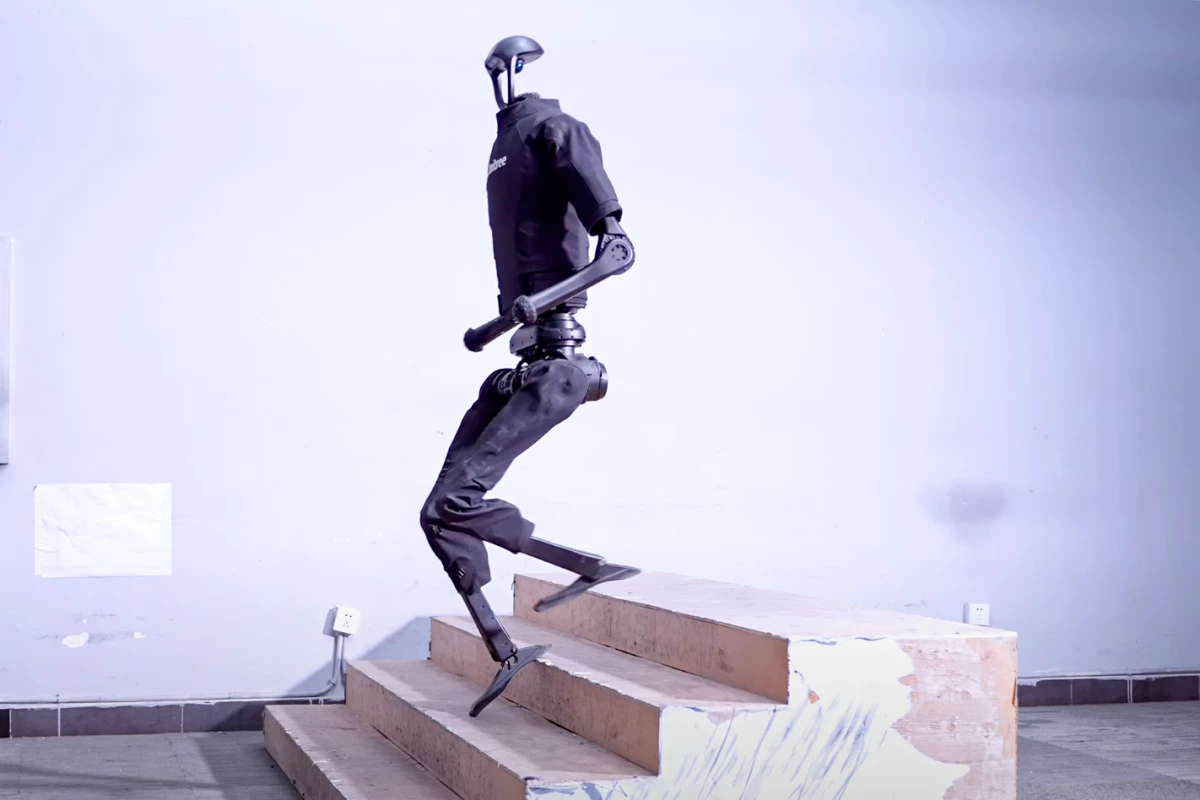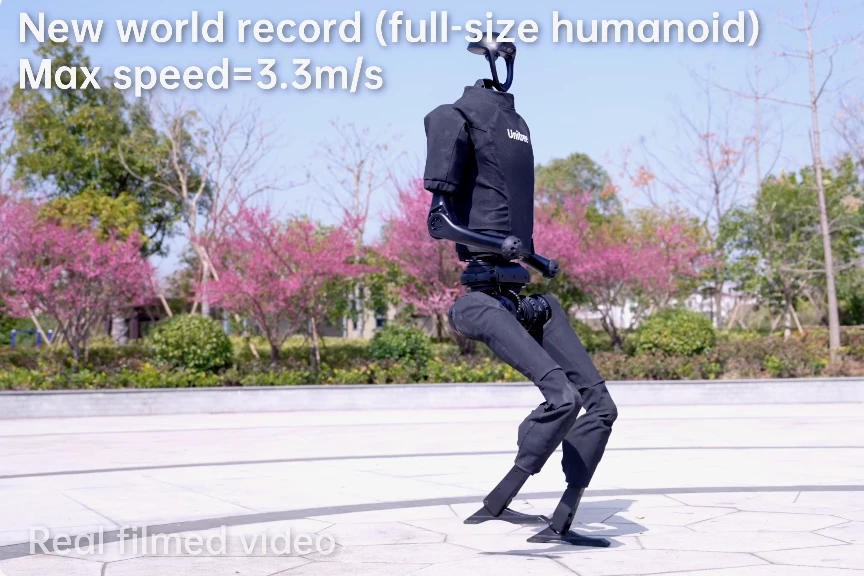China's Unitree Robotics is claiming a new world speed record for its H1 humanoid robot. In a just-released video, the bipedal bot is pictured hustling along at a claimed 3.3 meters per second (11.9 km/h or 7.4 mph) … and the fun doesn't stop there.
First announced last December, the H1 is Unitree's first humanoid model. In the past, the company has been better known for its dog-like quadruped robots.
The originally announced version of the H1 stands 1,805 mm tall (71 in), weighs approximately 47 kg (104 lb) and can carry a payload of up to 30 kg (66 lb). Each of its legs has five degrees of freedom thanks to joints in the hip, knee and ankle. Joints in the shoulder and elbow give each arm a total of four degrees of freedom.

The robot images its surroundings in 360 degrees via a head-mounted Intel RealSense D435i depth-sensing camera and a Livox MID360 LiDAR module. Output from those devices is analyzed in real time by Dual Intel Core i7-1265U microprocessors.
Here's a quick look at what the original version of the H1 was capable of when it was announced just three months ago. Among other things, it could maintain its balance and keep walking, even when being kicked.
In the video that was posted today (Mar. 1), the latest version of the H1 – called the Evolution V3.0 – does a lot more. Most importantly, as previously mentioned, it speed-walks along a flat surface at a reported speed of 3.3 m/s. According to Unitree, this is a new world record for a full-size humanoid robot.
For a bit of context, Agility Robotics' Cassie bipedal robot set a world robotic sprinting record in 2022, when it covered a distance of 100 meters (328 ft) in 24.73 seconds – that averages out to 4.0 meters per second (14.4 km/h or 8.9 mph). Cassie, however, is essentially just a set of legs and a "head," not a full humanoid.

Rival company Figure isn't prioritizing walking speed on its humanoid robot just yet, while Sanctuary's Phoenix model doesn't even have legs at this point in time – its makers are focusing much more on its manual dexterity – which is starting to look incredibly fast and fluid in its own right. And Tesla did recently boast a new walking speed for its Optimus full-size humanoid, although that was only 0.6 m/s.
Optimus strolling around the lab pic.twitter.com/E25ttHGsF0
— Elon Musk (@elonmusk) February 24, 2024
Compare that to the new video of the Unitree H1 Evolution V3.0, in which it not only speed-walks but also dances (demonstrating full-body coordination), climbs and descends stairs (spinning around on the way back down) and jumps as high as a man standing next to it.
The standing jump is more significant than you might think, as the H1's legs are moved simply by house-brand M107 electric motors. More adept jumping humanoids, such as Boston Dynamics' Atlas, utilize more powerful, but bulkier, heavier and leakier hydraulic actuators. So getting this kind of explosive movement out of electric motors is impressive work by Unitree!
Should you be wanting an H1 of your own, be prepared to prepared to wait anywhere from three to 10 years, and then shell out US$90,000.
Source: Unitree Robotics





